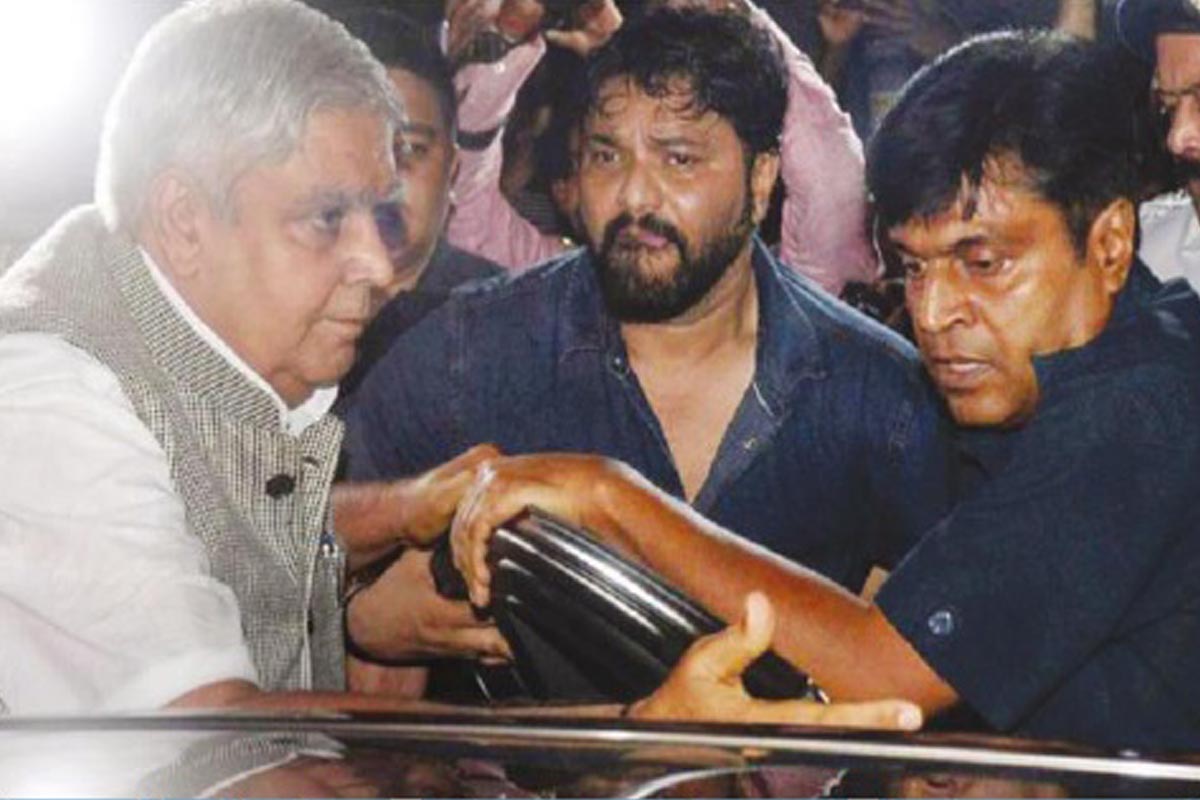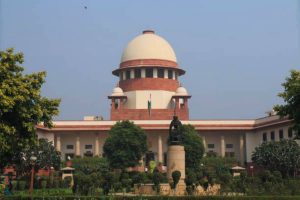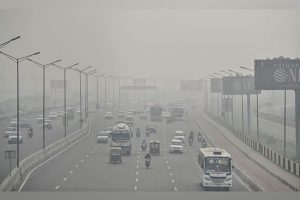Is the vice-chancellor of a university the supreme authority on campus to execute a decision? The question resurfaces with the setting up of a high-powered committee to find a solution to the crisis in the wake of hostel fee hike in Jawaharlal Nehru University. The answer seems to be theoretically “yes”, but not in practice. Otherwise, however, the VC should not have been blamed for the circumstances that led to untoward violence taking the agitation to the streets. If a high-powered committee is made to supersede the V-C even on emergency matters, the administrative structures of universities do call for reflection.
Recently, the Governor of West Bengal had to go over to a campus to rescue a central minister, who was heckled for six hours there. While the Governor blamed the Vice-Chancellor for failing to maintain order and to protect the minister from an awkward situation, his role as the Chancellor of the university has been questioned. In March 2014, female students of Benaras Hindu University protested alleging gender discrimination and moral policing. Later, the “insensitivity” on the part of the VC was blamed suggesting that a proper response might have averted the lathi-charge on girl students that followed. One is reminded of R P Rastogi as the VC of the same university in the 1980s.
When he tried to put the university on the right track, every attempt was made to oppose and sabotage him. Strikes, violence, political mobilisation, official and political pressures were attempted. But nothing succeeded. One knows of countless vicechancellors who compromise day after day and whose commitment to academic integrity is essentially a matter of convenience. However, questions are being raised about the role of a vice-chancellor. But the crisis of academic leadership with which universities are confronted at times certainly makes us ask further: Are governors as chancellors of state universities or President as Visitor not capable of providing or expected to provide proper guidance to the university community in times of crises?
More than a decade ago, Pratibha Patil, the then President of India, had questioned the validity of certain honorary degrees being awarded by Jamia Millia Islamia. She objected to the University’s suggestion that she should serve as a post-facto sanctioning authority. By the statutes, her prior approval was required. This was not taken well by the University, which went ahead and conferred the degrees at its convocation on October 2008 and, subsequently, sought the approval of the President. Not only was there a violation of rules involved here, but it also showed contempt towards the office of the President. Mrs. Patil was entirely justified in her objections.
In 2003, the turmoil in Meghalaya, where outgoing Governor RS Mooshahary, who visited Chandra Mohan Jha University, and its Chancellor, CM Jha had taken recourse to serious conflict, did not draw much national attention. With the ruling elite busy politicking when education was in peril Mooshahary did, however, show that no university administration could treat its Visitor as a rubber stamp. He did play a key role in exposing the scams in CM Jha University and the Chancellor was on the run following several FIRs against him for turning the university into a degree-awarding factory, having set up educational shops across the country for providing Ph Ds in three months.
Mooshahary charged the university with not submitting its annual report as per the University Act, 2009 under which it was set up. In the interest of maintaining proper standards, the state regulatory board of higher education accepted his suggestion for dissolution of the university. Of more recent vintage, the then West Bengal governor MK Narayanan, as Chancellor of Gour Banga University, endorsed the State government’s move to serve a show cause notice on the VC as his ways were allegedly illegal and arbitrary. The academic cant was too much for then WB governor Gopal Krishna Gandhi to digest in 2006 and he put Calcutta University authorities on notice.
He had cautioned the university to utilize the Rs 100-crore budgetary grant judiciously instead of frittering away the 150th anniversary gift pack on non-essential expenditure. Way back in March 2003, when the VC of Rajasthan University was unceremoniously removed from office, a secret enquiry was conducted by the higher education secretary into the allegations against him. The enquiry was conducted at the instance of the Governor of Rajasthan and Chancellor of the University. The academician who replaced the VC also had a controversial past. The unsavoury drama that took place at the residence of the VC while the dismissal order was being handed over by the higher education Secretary, accompanied by the Secretary to the Governor added fuel to the fire. The allegations against the Governor thus became a secondary issue.
Sometimes back, the VC of Kerala University had been under siege for quite a long time. For all practical purposes, the university building was out of bounds for him. The acting registrar was attacked while leaving the university campus because he had sided with the VC. The entire university, from syndicate to the students, was split, with one faction supporting the VC and the other opposing him. The dilly-dallying approach of the state government further aggravated matters and the academic atmosphere remained vitiated for quite a long time.In an atmosphere surcharged with emotion and hatred, the real issue sometimes gets diverted. In case of Kerala University, the real issue was whether the VC, given the allegations against him, could lead the institution and command respect of the university community.
The Governor and Chancellor of the university did precious little to resolve the crisis. It is time for a national debate on who should be a Chancellor or Visitor. Are Governors/President of India capable of providing academic leadership to the university community in times of crisis like the one in Jadavpur University? The vital question is about the role of the UGC or the Association of Indian Universities on issues like autonomy, credibility of the head of the institution, enquiry into the functioning of the administration, academic freedom and intellectual dissent. Has our intelligentsia given any serious thought to dealing with allegations regarding irregularities in our universities?
Many of our academics often willingly play into the hands of vested interests when they become vicechancellors. Irregularities in faculty selection, violations of university acts, statutes, ordinances and manipulations in regard to the functioning of academic and executive committees finally vitiate the academic atmosphere. The real problem is that top jobs in universities are largely allocated on the basis of social background, political ideology or personal bias.
When Ashutosh Mukherjee became the VC of Calcutta University in the early 20th century, Radhakrishnan was appointed the VC of Andhra University in 1930s and Hans Mehta took over as VC of Maharaja Sayajirao University in Baroda. In the1950s, no one asked where their affiliation lay. Only their scholarly accomplishments and institutional visions were taken into consideration. Mooshahary and Pratibha Patil certainty showed that the head of the state need not always play a passive role when higher education becomes something of a joyride. Was not the West Bengal governor Jagdeep Dhankhar right in his choice to rush to rescue a minister in trouble at that opportune moment?
(The writer is former Associate Professor, Dept of English, Gurudas College, Kolkata and is presently associated with Rabindra Bharati University)












